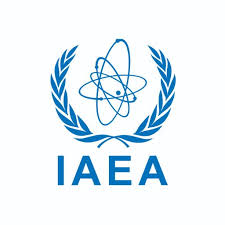IAEA reviews Uganda's infrastructure development for nuclear power
The Integrated Nuclear Infrastructure Review (INIR) was carried out at the request of the Government of Uganda.

An International Atomic Energy Agency (IAEA) team of experts this week concluded an eight-day mission to Uganda to review the country’s infrastructure development for a nuclear power programme. The Integrated Nuclear Infrastructure Review (INIR) was carried out at the request of the Government of Uganda.
Electricity demand in Uganda, an East African country of 43 million people, has increased significantly in recent years in line with its growing economy. To diversify the national energy mix, which is now mainly based on hydroelectricity, Uganda has taken steps towards the introduction of nuclear power.
The INIR team reviewed the status of nuclear infrastructure development in Uganda using Phase 1 of the IAEA’s Milestones Approach. The Ministry of Energy and Mineral Development (MEMD) of Uganda hosted the mission.
The INIR team concluded that the Government of Uganda is committed to developing the required infrastructure for nuclear power in a coordinated approach with all concerned stakeholders. Uganda drafted an energy policy that includes nuclear power and established a Nuclear Energy Programme Implementing Organization (NEPIO).
A NEPIO coordinates efforts among organizations and individuals who have roles to play in the process. Uganda’s NEPIO has completed several studies on different infrastructure issues and drafted a Nuclear Power Roadmap for Uganda that makes recommendations for key decisions on the development of the infrastructure for nuclear power in the short, medium and long term.
The INIR team made recommendations and suggestions aimed at assisting Uganda in making further progress in the development of its nuclear infrastructure and its readiness to construct the first nuclear power plant in the country.
“The INIR mission was conducted in a cooperative and open atmosphere with the engagement of different ministries, departments and agencies as well as residents from areas in the vicinity of the potential sites of a nuclear power plant,” said team leader Mehmet Ceyhan from the IAEA’s Nuclear Infrastructure Development Section. “As Uganda prepares to introduce nuclear energy to meet growing electricity demand, it is important the Government continues to support further development of the infrastructure needed for a safe, secure and peaceful nuclear power programme.”
The INIR team comprised four international experts from Algeria, Morocco, Turkey and the United States of America, as well as seven IAEA staff. It reviewed the status of 19 nuclear infrastructure issues using the IAEA evaluation methodology for Phase 1 of the Milestones Approach.
Prior to the mission, Uganda prepared and submitted a self-evaluation report and supporting documents covering all infrastructure issues to the IAEA.
The INIR team highlighted areas where further actions would benefit Uganda. For example, the team pointed out that the Nuclear Power Roadmap for Uganda needs to be updated and completed by conducting further studies that provide a basis for informed decisions and commitments for the nuclear power programme. Further areas the team raised included the need to finalize Uganda’s energy policy; to strengthen its plans to join the relevant international legal instruments and to develop an adequate legal framework; to further assess and plan for the development of the human resources necessary for the nuclear power programme; and to further analyse the preparedness of the electrical grid and continue work in the areas of siting, environmental protection, financing, and radiation protection.
The team also identified good practices that would benefit other countries developing nuclear power in the areas of national position, stakeholder involvement and industrial involvement.
Welcoming the outcome of the mission, Hon. Dr. Ruth Nankabirwa Ssentamu, Minister of Energy and Mineral Development said: “The Government of Uganda is well aware of the importance of energy for socio-economic development to improve the lives of all our people. Nuclear power is envisaged to contribute to the electricity generation mix by 2031. As the country implements the National Development Plan III, the Government has taken the initiative to assess its readiness towards construction and operation of the first nuclear power plant by using the IAEA Milestones Approach. This Integrated Nuclear Infrastructure Review mission will assist Uganda in reviewing the current status of development of our nuclear infrastructure and support identifying those areas where further work is required.”
ALSO READ
Struggling Refugees in Uganda: A Call for Global Support
Reeves' Bold Budget Plans for Britain's Economy
Akhilesh Yadav Critiques BJP's Impact on Festivals and Economy
U.S. Economy's Resilience Boosts Global Growth Amid Election Uncertainties
IAEA and MD Anderson Cancer Center Partner to Equip Caribbean Nations with Breast Cancer Diagnostic Skills










